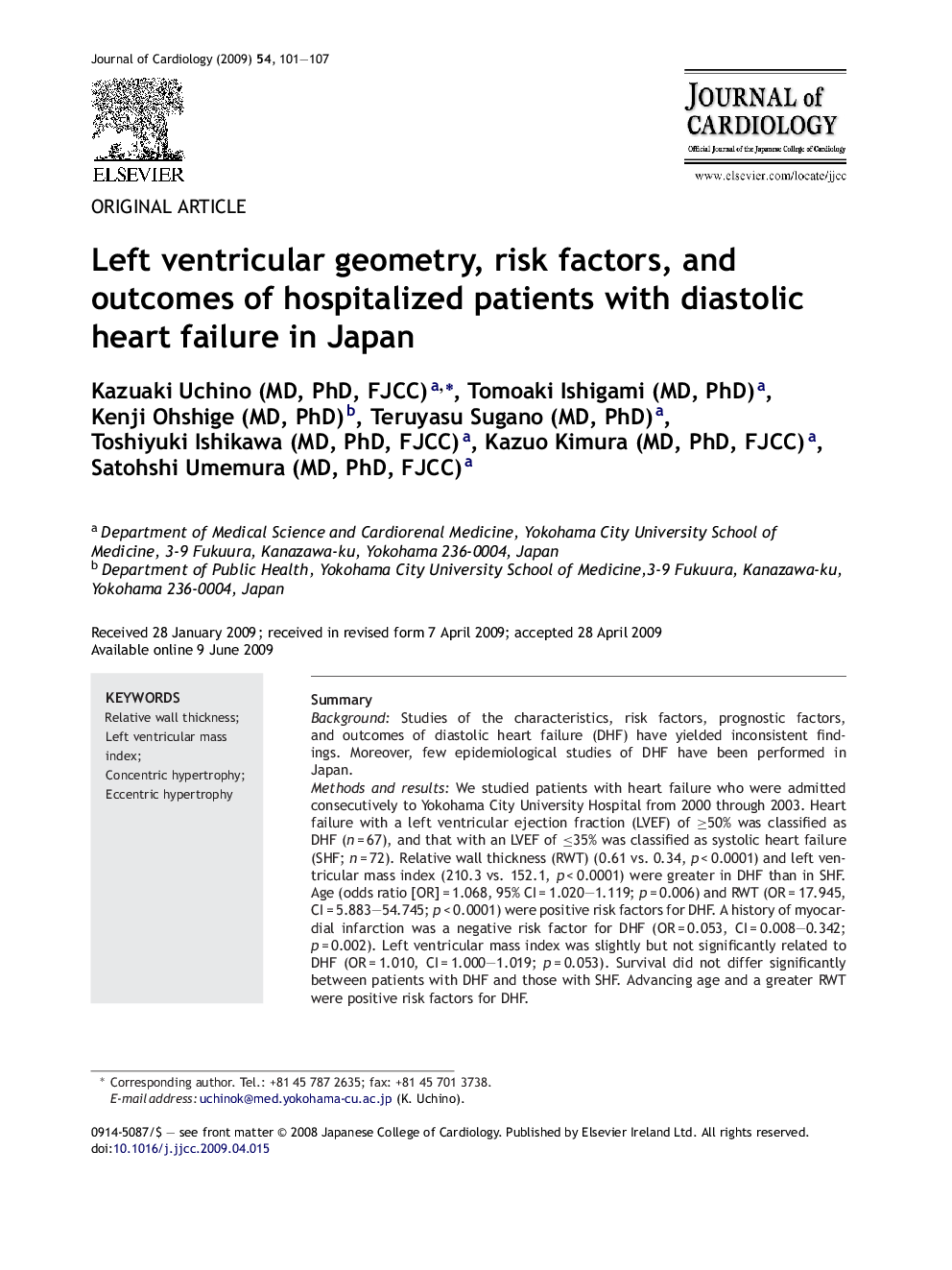| Article ID | Journal | Published Year | Pages | File Type |
|---|---|---|---|---|
| 2963755 | Journal of Cardiology | 2009 | 7 Pages |
SummaryBackgroundStudies of the characteristics, risk factors, prognostic factors, and outcomes of diastolic heart failure (DHF) have yielded inconsistent findings. Moreover, few epidemiological studies of DHF have been performed in Japan.Methods and resultsWe studied patients with heart failure who were admitted consecutively to Yokohama City University Hospital from 2000 through 2003. Heart failure with a left ventricular ejection fraction (LVEF) of ≥50% was classified as DHF (n = 67), and that with an LVEF of ≤35% was classified as systolic heart failure (SHF; n = 72). Relative wall thickness (RWT) (0.61 vs. 0.34, p < 0.0001) and left ventricular mass index (210.3 vs. 152.1, p < 0.0001) were greater in DHF than in SHF. Age (odds ratio [OR] = 1.068, 95% CI = 1.020–1.119; p = 0.006) and RWT (OR = 17.945, CI = 5.883–54.745; p < 0.0001) were positive risk factors for DHF. A history of myocardial infarction was a negative risk factor for DHF (OR = 0.053, CI = 0.008–0.342; p = 0.002). Left ventricular mass index was slightly but not significantly related to DHF (OR = 1.010, CI = 1.000–1.019; p = 0.053). Survival did not differ significantly between patients with DHF and those with SHF. Advancing age and a greater RWT were positive risk factors for DHF.ConclusionLV geometry of DHF and SHF are quite different. DHF is characterized by concentric hypertrophy of the left ventricle, whereas SHF is characterized by eccentric hypertrophy. Age and RWT were positive risk factors for DHF. Survival is similar in DHF and SHF.
